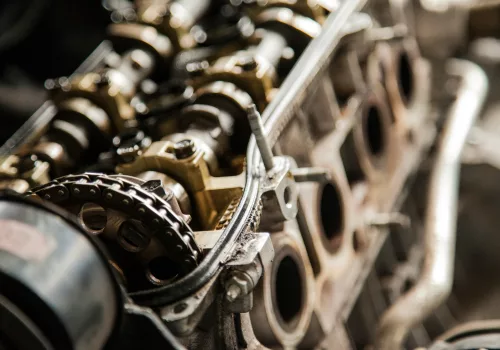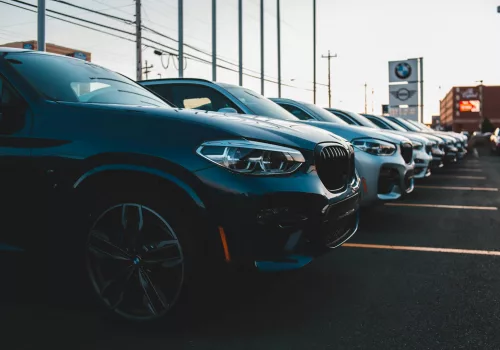Tesla’s Autopilot system has revolutionized the automotive industry, transforming the way we drive and interact with our vehicles. But have you ever wondered how this advanced technology works? In this article, we’ll take a deep dive into the inner workings of Autopilot, exploring the sensors, software, and machine learning algorithms that enable semi-autonomous driving.
Sensors and Hardware
Autopilot relies on a suite of advanced sensors and hardware to gather data about the vehicle’s surroundings:
- Eight cameras: These include a forward-facing camera, side cameras, and a rearview camera. They provide visual data that is crucial for detecting and interpreting the environment.
- Twelve ultrasonic sensors: These sensors detect objects that are close to the vehicle, such as curbs and other vehicles in adjacent lanes.
- A forward-facing radar: This radar helps in detecting vehicles and obstacles in poor visibility conditions, such as fog or heavy rain.
- A GPS module: It provides precise location data, crucial for navigation and mapping.
- An inertial measurement unit (IMU): This unit measures the car’s acceleration and rotational rates, helping to assess the vehicle’s movement.
- A high-precision maps database: This database is crucial for understanding the road layout and planning routes.
These sensors provide a 360-degree view of the environment, allowing the system to detect objects, lanes, and obstacles. The integration of these components is essential for the seamless functioning of Autopilot.
Computer Vision
The cameras on a Tesla vehicle are the eyes of the Autopilot system, providing a comprehensive view of the environment. Computer vision algorithms process the video feeds, detecting objects such as other vehicles, pedestrians, lanes, and obstacles.
- Edge Detection and Object Recognition: These are foundational techniques in computer vision. Edge detection helps in identifying boundaries within images, while object recognition classifies detected objects.
- Advanced Techniques: Convolutional Neural Networks (CNNs) and architectures like YOLO (You Only Look Once) and SSD (Single Shot Detector) significantly enhance object detection and classification. Tesla’s use of these techniques allows the system to quickly and accurately identify and track multiple objects simultaneously.
Machine Learning
Tesla uses machine learning models to classify and predict the behavior of detected objects. These models are trained on vast amounts of data, including images, sensor data, and driving scenarios. By leveraging machine learning, Autopilot can adapt to new scenarios and enhance its performance over time.
- Data Training: Tesla’s data set includes millions of miles driven by vehicles equipped with Autopilot. This data is invaluable for training machine learning models to recognize and respond to a wide array of driving situations.
- Techniques for Adaptation: Techniques like transfer learning and domain adaptation allow Autopilot to generalize learning from one scenario to another. This adaptability is crucial for handling diverse driving environments, from city streets to rural highways.
Sensor Fusion
The Kalman filter is a mathematical framework that combines data from multiple sensors (cameras, radar, ultrasonic sensors, GPS, and IMU) to create an accurate and reliable picture of the vehicle’s surroundings. Sensor fusion enables Autopilot to reconcile potential discrepancies between sensors and generate a more accurate understanding of the environment.
- Advanced Sensor Fusion Techniques: Bayesian estimation and Markov chain Monte Carlo (MCMC) methods are employed to further improve the accuracy and reliability of the sensor data. These techniques help in filtering out noise and ensuring that the data used for decision-making is as precise as possible.
Control Algorithms
Once Autopilot has a clear understanding of the environment, control algorithms execute the appropriate driving maneuvers (steering, acceleration, and braking). These algorithms consider factors like speed, trajectory, and road conditions to maintain safe and efficient driving.
- Model Predictive Control (MPC): This involves predicting future vehicle states and optimizing control actions to follow a desired trajectory. MPC is crucial for maintaining smooth and safe driving maneuvers.
- Trajectory Planning: Algorithms plan the vehicle’s path and motion, considering the current environment and anticipated changes, such as merging traffic or upcoming turns.
Neural Networks
Tesla has incorporated neural networks into Autopilot to improve object detection and classification. These networks are trained on vast amounts of data, allowing Autopilot to recognize and respond to complex scenarios, such as construction zones or pedestrian behavior.
- Reinforcement Learning: This technique allows the system to learn from experience, improving performance over time. It’s particularly useful for adapting to new and unforeseen driving scenarios.
- Deep Deterministic Policy Gradients (DDPG): This is a reinforcement learning algorithm that helps in decision-making under uncertain conditions. It enables Autopilot to make more nuanced driving decisions, such as adjusting speed based on traffic flow.
Software Updates
Tesla’s software architecture enables over-the-air updates, allowing the company to continuously improve Autopilot’s performance and capabilities. These updates ensure that Autopilot stays cutting-edge and adapts to evolving driving scenarios.
- Continuous Improvement: Tesla monitors Autopilot’s performance across its fleet, using real-world data to identify areas for improvement. Regular updates help in refining algorithms and incorporating new features.
- User Feedback: Feedback from Tesla owners is invaluable. It helps in identifying bugs or issues and in refining the user interface for better usability.
Practical Tips and Common Mistakes
For Tesla owners using Autopilot, understanding how to maximize its benefits and avoid common pitfalls is crucial:
- Know the Limitations: Autopilot is a semi-autonomous system and requires driver supervision. Always be prepared to take control if the situation demands.
- Regular Software Updates: Ensure that your vehicle’s software is up-to-date. Updates not only improve performance but also enhance safety features.
- Environmental Awareness: Autopilot performs best on well-marked highways. In complex urban environments, extra caution is required.
- Feedback and Reporting: Tesla encourages users to report any anomalies or issues they experience. This feedback is critical for ongoing improvements.
Real-World Examples and Case Studies
Several real-world examples demonstrate the capabilities and limitations of Tesla’s Autopilot:
- Highway Commutes: Many Tesla owners have reported significant reductions in driver fatigue during long highway commutes, as Autopilot handles most of the driving tasks.
- Emergency Situations: In some cases, Autopilot has successfully avoided potential collisions by taking evasive actions faster than a human driver could react.
- Learning from Incidents: Every incident involving Autopilot is analyzed to improve the system’s responses. For example, after reports of Autopilot failing to recognize stationary objects, updates were made to enhance detection algorithms.
The Future of Autopilot
As Autopilot continues to evolve, we can expect even more advanced features and capabilities to emerge, shaping the future of transportation. Tesla’s vision includes full self-driving capabilities, where the vehicle can handle all aspects of driving without human intervention.
- Regulatory Challenges: Achieving full autonomy will require overcoming regulatory hurdles. Tesla is actively working with governments and regulatory bodies to address safety and legal concerns.
- Technological Innovations: Future developments may include enhanced AI algorithms, better sensor technology, and improved energy efficiency, all contributing to a safer and more reliable autonomous driving experience.
- Impact on Society: Autonomous vehicles have the potential to reduce traffic accidents, lower transportation costs, and increase mobility for the elderly and disabled. Tesla’s Autopilot is at the forefront of this transformative shift in transportation.
By exploring the intricacies of this system, we gain a deeper appreciation for the innovation and expertise that has gone into making our roads safer and our driving experiences more enjoyable. As Autopilot continues to advance, it not only promises to redefine how we approach driving but also to substantially contribute to a future where autonomous vehicles are the norm.






